It’s not just vodka that must be ice-cold.
Let’s be honest. One of the main achievements of Russian culture that Russians’ ancestors generously shared with the peoples of Siberia and the Far East was vodka. Yes, yes, of course: literacy, rifles, collective farms and radio — all that was fine, but they came later.
Whether or not vodka benefited our neighbors is hard to say. But our national drink clearly contributed to the ties of friendship among nations. And this cultural exchange had one more unexpected consequence. When the Russian settlers and explorers brought vodka with them, they needed only one more thing. No, it was not a shot glass. It was the right food to go with the shot of vodka. All the Russian dishes that people ate with their vodka — aspics, marinated roast meat and stuffed pastries — remained back home. And this began what Soviet scholars called the “mutual enrichment of cuisines of brotherly peoples.”
The newcomers turned to local products, and in the North that means frozen fish. These products were transformed into something to grab with a fork after a shot of vodka. Actually, we might be wrong about the shot glass: you need more than one shot of vodka to beat the cold. “Only dogs eat fish without vodka” — this bit of Russian wisdom quickly captured the hearts and minds of the local people.

First, naturally, stroganina was chosen as an appetizer. “One of the favorite and indeed very healthy dishes among the Yakuts is ‘stroganina’,” wrote Vatslav Seroshevsky in 1896. Seroshevsky was a man with a remarkable life. He was exiled to Yakutia for participation in the revolutionary movement in Poland in 1879 and then devoted his entire scientific life to studying this region. “Stroganina is frozen, sliced fish,” he wrote. “It is made of different kinds of the best fish: salmon and sterlets.”
Today this dish is more often made of Siberian fish: whitefish, nelma and muksun. Stroganina is a real delicacy. But only in one case: when it is prepared strictly by all the rules. And here, above all, the way it is frozen is important. Fish that has been exposed to improper storage and defrosting simply loses its unique taste. And more importantly, fish has to be kept at a very low temperature to make it safe to eat raw.
The next task is to skin the frozen fish. We made a video, since it is really hard for a beginner.
First we need to cut off the nose of the fish. It will get in the way: it’s hard to hold the fish vertically when it’s balanced on its round snout. And you must hold it that way to strip the skin off the back and belly of the fish.
The next difficult task is to remove the scaly skin. This skin, of course, will not come off like a “stocking.” You’ll only read this in the cookbook by Yelena Molokhovets: “Hang the pike on a string, make a cut around the neck and strip off the skin like you take off a stocking.” This trick will not work with frozen fish.
You need to remove the skin with a knife from the belly and back. The main task is to make sure that each side of the skin is pulled off in one piece. First you need to cut off the fins and skin along the sides.
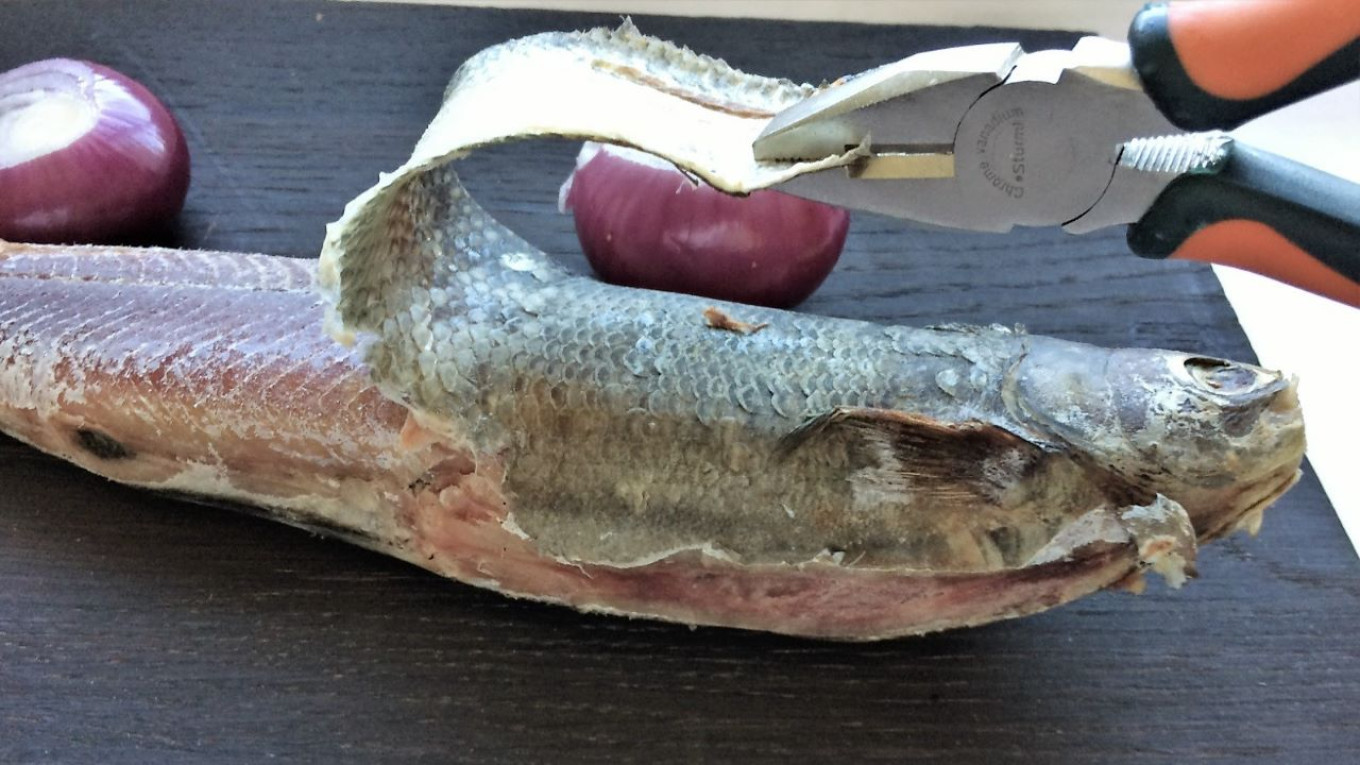
Next, we cut off the tail. We don’t really need it — except to put it in a pot of fish soup or give it to the cat. Then we delicately use a knife to pull off the skin from the tail end of the fish. Once you pull back the skin, you grip it with pliers and carefully tear it away from the body. Don’t expect to be able to do this on your first try. The skin will tear. But with practice you’ll learn.
Once you let go of the tail, you’ll need to use a towel to hold on to the skinned part of the fish. You won’t be able to hold it with your bare hand – your hand will slip and you’ll let go of the fish.
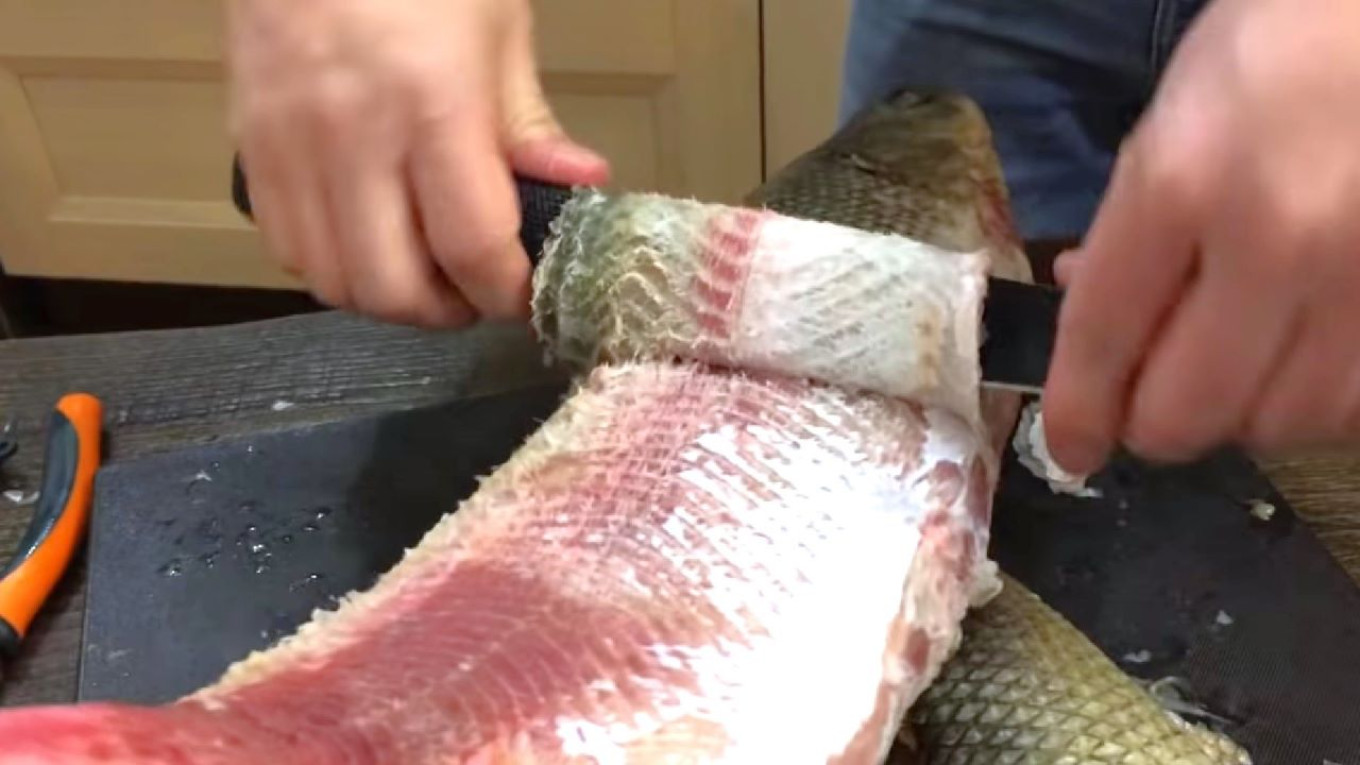
There is another way to do it. You can use a knife and wrap the skin around the knife as you pull it off. This method requires some skill, but is mastered fairly quickly (see video). And once you get the hang of it, it is more effective than using pliers.
All this effort will be more than compensated by the taste of the stroganina itself. Be sure to serve a dish of ground black pepper and salt along with the slices of fish. You dip each piece of fish into the seasonings before popping it into your mouth.
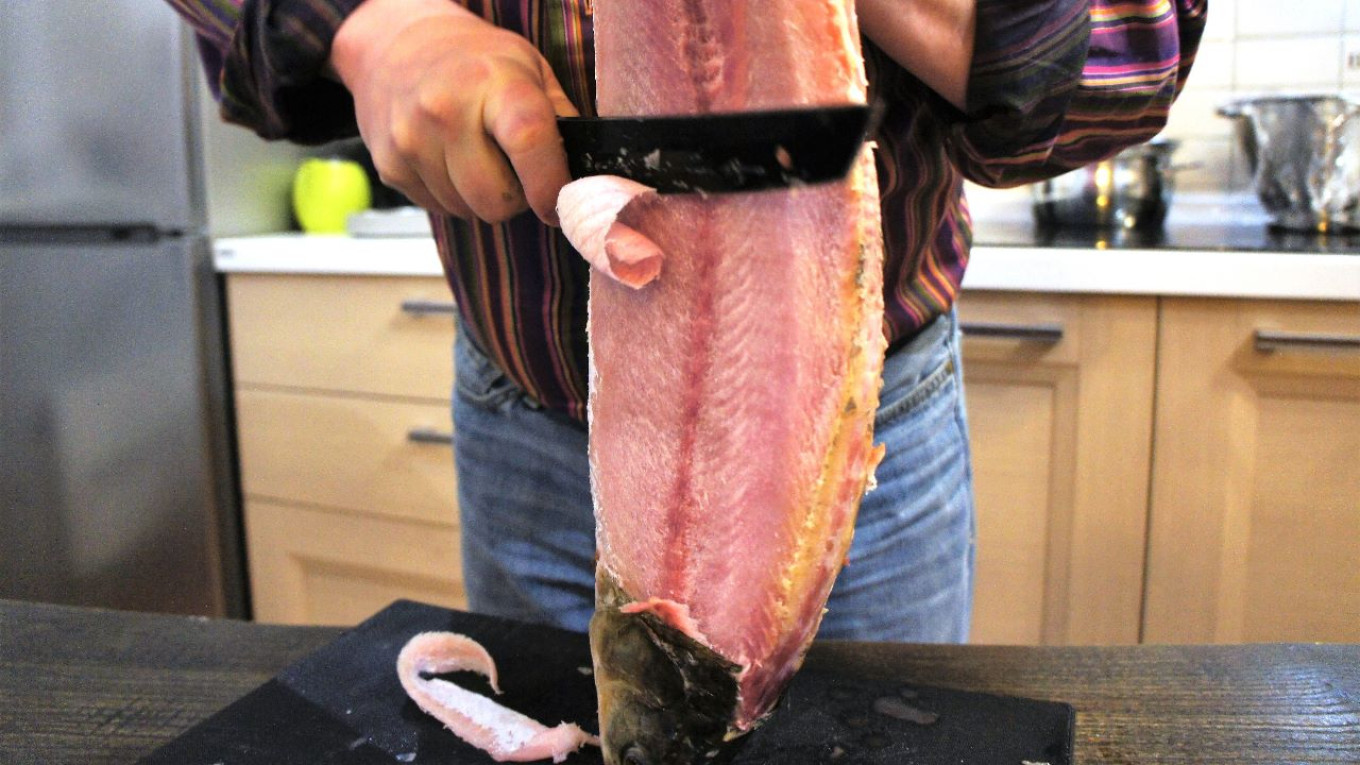
A dish that is very similar to stroganina is called sagudai. It is made with frozen fish, salt, pepper, and onions, but in this dish the fish is not sliced from the fish in long, thin strips but simply cut into cubes.
The important thing is that sagudai is made quickly and eaten quickly. You put it together, wait about 15 minutes for the flavors to meld, and the eat it right away. If you make it with salted, not fresh-frozen raw fish, you can keep it for a day or two at most.
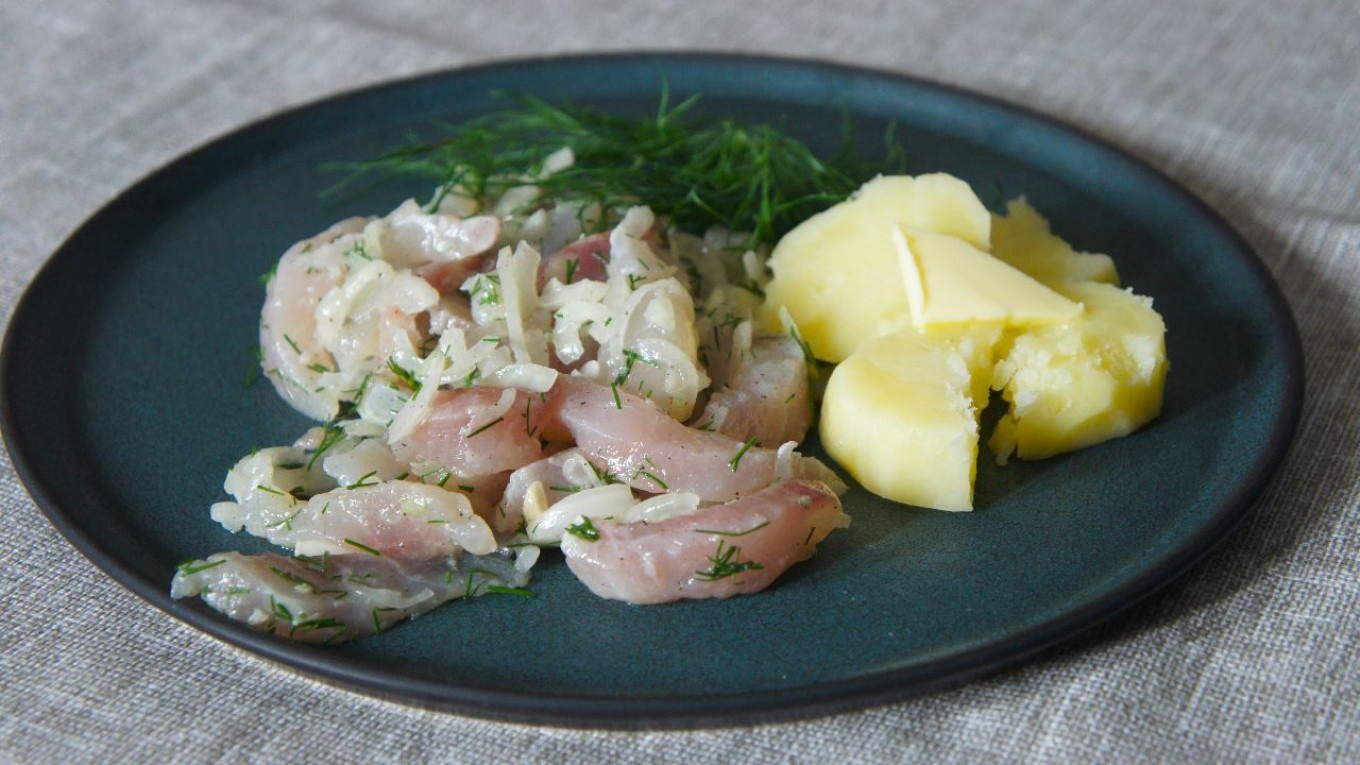
Stroganina is perfect except for one thing: it has no smell. And it is not immediately filling, since the fat is frozen and felt more in the stomach than on the tongue.
The quest for the taste, smell, spicy flavor and warmth of home-made food inspired the ideal northern dish.
Sometime in the middle of the 19th century the joint efforts of travelers and locals resulted in a cherished recipe. It includes the same frozen fish, salt and pepper, vegetable oil, and onions. It is unlikely to have appeared before then since it requires a more or less developed infrastructure of transportation and storage. If you’ve ever tried a frozen onion, you’ll know what a travesty it is. Onions had to be brought to the far north still “alive.”
When all those conditions fell into place, a dish called Indigirka salad was born. The dish, named for a river in the north-east of Russia in Yakutia, uses any kind of whitefish. Naturally, the fish is frozen solid, then brought out to thaw for just 10-15 minutes so that the skin can be peeled off.
Once skinned, the fish fillet is boned, cut into cubes and put in a bowl. The onion is also cut into cubes and added to the bowl. Then they are mixed together, lightly pressing or squeezing the onion pieces so that they release their liquid. Add salt and pepper — an absolutely essential ingredient — and at the end, add a bit of vegetable oil of your choice.
This dish is simple to prepared except for one trick: timing. You must serve it to your guests literally the moment you make it. It’s the frozen fish that makes this dish delicious and special.
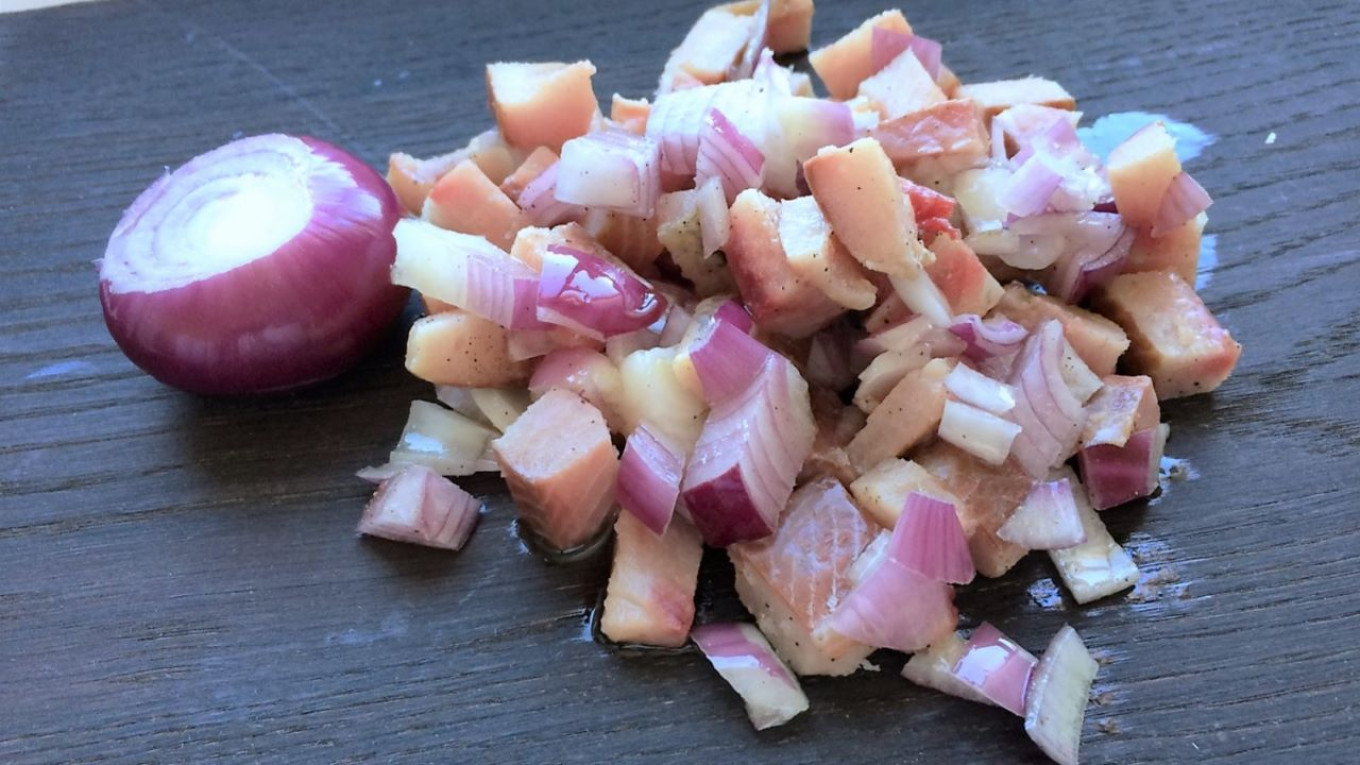
This appetizer is a great example of how recipes arise from cultural contacts among countries and their people and then become part of both national cuisines.
But there is one last question: Should stroganina only be made with Siberian fish? This is easy to answer. In the Russian North it is made with the local whitefish and Baltic Sea salmon. Today in Kaliningrad restaurants they make stroganina with bonito, red trout and mackerel. Other whitefish are Atlantic cod, whiting, haddock, hake, and pollock. Experiment!





